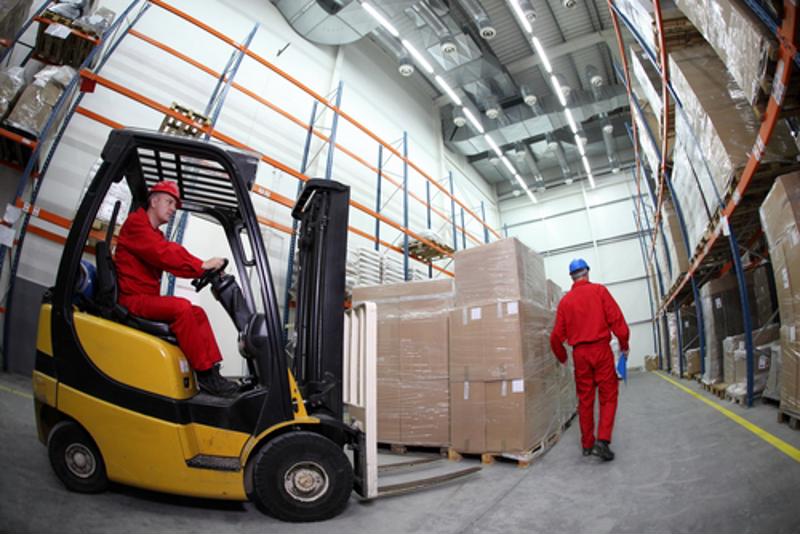Forklifts are an integral part of warehouses, distribution centers and many other facilities, but staying safe while working with or around lift trucks requires proper maintenance and inspections, adequate and continued training, and being aware of one's surroundings.
Safety efforts must extend beyond these initiatives, though. Two key areas of focus for facilities should be forklift attachments and electric forklift battery handling practices.
 Forklifts are integral to most facilities, warehouses and distribution centers.
Forklifts are integral to most facilities, warehouses and distribution centers.Forklift attachments
Installing additions to your industrial powered trucks can improve safety and usability.
High-lift rider trucks can be outfitted with overhead gear to protect against falling items like boxes or materials. While the lift truck operator will have defense against small items that may tumble from top shelves, keep in mind that overhead guards generally aren't strong enough to handle the impact of an entire load, according to the Occupational Health and Safety Administration. As such, drivers should wear hard hats while operating a forklift.
A vertical load backrest extension is another helpful safety feature that can be added to powered industrial trucks. These should be used whenever a load presents a hazard. These devices are meant to support a large load and prevent it from hitting the mast or sliding toward the driver when the mast is tilted backward.
If a truck has front-end attachments that weren't installed at the factory, the truck should be marked to indicate the total weight of the combined truck and attachment with a load fully lifted and laterally centered.
Though certain modifications like these can add functionality and improve safety for forklifts, people must be cautious when installing these add-ons. OSHA powered industrial truck regulations state that consumers must have the manufacturer's written approval for the addition prior to implementing a modification that changes the capacity or safety of the truck.
Electric forklift battery considerations
Electric forklifts have a unique set of safety considerations that facility managers must be aware of. Forklifts must always have access to power. For electric forklifts, that means charging stations. Facilities must position charging station in easy-to-access, designated areas, and ensure all employees are aware of the locations.
There are times when battery charging or changing can become hazardous. To reduce the risk of electrolyte spills or asset damage, facilities should install barriers or devices to protect charging stations from trucks. Additionally, facilities must be prepared for spills or dangerous situations by having materials on hand for flushing or neutralizing electrolyte spills. OSHA suggests plenty of easily accessible water, soda ash and a fire extinguisher in case of a flare-up. The charging area should also have adequate ventilation.
Having specific material handling equipment designated for battery management can also make maintaining electric powered industrial trucks easier and safer. A couple options for these include conveyor systems or overhead hoist systems.
When repairing electrical systems, employees need to take caution regarding stored energy. Before beginning a repair, batteries must be disconnected from power.
By having an embedded technician at your jobsite, forklift maintenance and repairs can be addressed quickly and expertly. To learn more about having an on-site dedicated technician, connect with NMS.

